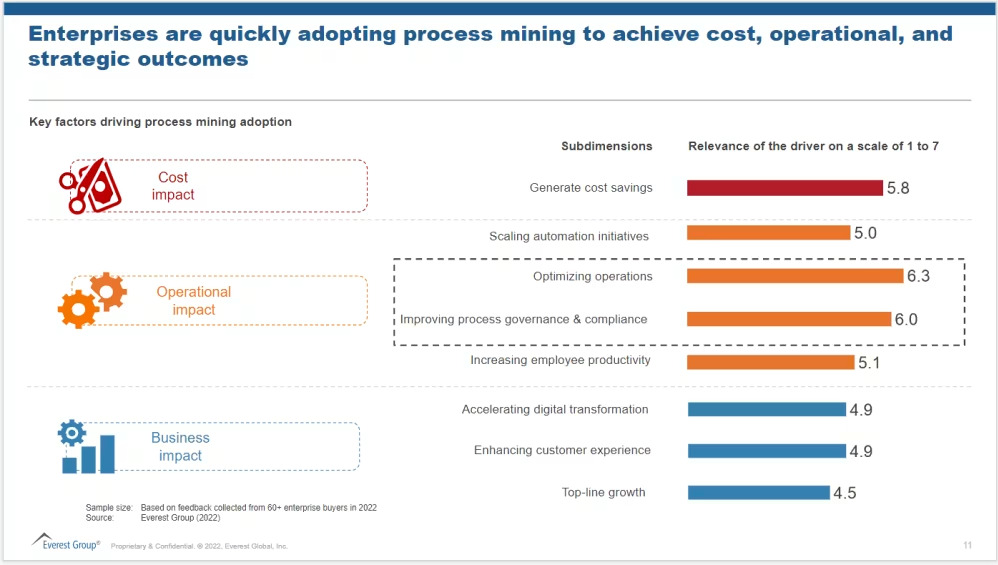In our previous newsletter, we introduced process mining and how it benefited companies, as well as some real examples where it was put successfully into practice in various areas. We ended up on a final note on how process mining could be used in digital transformation. In this article, we will look further into how process mining and digital transformation go hand in hand and what advantages they may bring to companies when used together in the near future.
Digital transformation aims to revolutionize the work culture and practices in a company. However, it’s relevant to note that digital transformation can fail very easily, such as in some cases where there’s a lack of employee engagement and resistance to change their work methods, when there’s inadequate management support, or even cases when there are rigid legacy systems. One last common failure case happens when there is no clear view of how the company truly functions and there are unknown variants or paths in the processes taking place. This is where process mining may come in to prevent situations like the ones above.
By using process mining to mine the processes that are taking place in a company, it is possible to see which processes exist, who interacts with them, and which are more prone to change, specifically digital change and to automate them. This approach combines machine learning, data mining and process modeling to paint a clear picture of how a process works in reality.
Given the uncertain economic environment and the need to drive growth, process intelligence has become the hottest emerging technology.
Enterprises, however, need to beware of the hype and focus on best practices to implement process intelligence and digital transformation.

Key takeaways (from Fleming research) include:
- Digital transformation has become table stakes and necessary for survival. Enterprises need to find new sources of value.
- Process and task mining are already in use to improve process excellence and drive productivity. Removing bottlenecks, productivity, working capital optimization and automation are all key use cases, according to HFS Research surveys.
- Finance and IT are departments demanding more process intelligence.
- Most enterprises expect to realize value from process intelligence within two years courtesy of Centers of Excellence (CoEs) and self-serve capabilities.
- Enterprises acknowledge early implementation challenges but see significant benefits.
- Adoption of process intelligence has plenty of room to grow since 23% of engagements are fully scaled up.
- Process intelligence teams will need technical and non-technical skill sets and diversity of thought. Aside from the data heavy lifting and analytics, remember communication and storytelling is also key.
Challenges affecting enterprises and noted that companies need to shift to being digital first but fast rising expectations, cost pressure, talent shortages and the need to manage risk.

What’s the “catch”:
- Lack of process visibility is the No. 1 challenge facing business followed by a complex system landscape.
- Process mining demand is surging because it drives transformation built on insights and automation. Ultimately, the goal is process orchestration.
- Cost savings is a top priority, but optimizing operations is also emerging as a big goal.
- Scaling process mining becomes challenging largely due to data quality and limited visibility of interconnected processes.
- Enterprises should focus on guided data clean up tools to start preparing for process intelligence.
- Question-based exploration and packaged process mining solutions focused on industry use cases will accelerate adoption.
- Intuitive process discovery approaches for business users will accelerate process transformation.
















